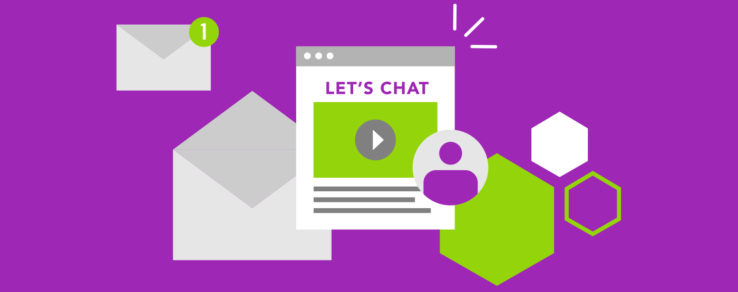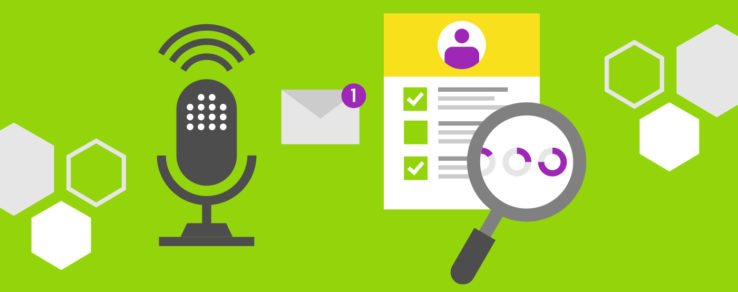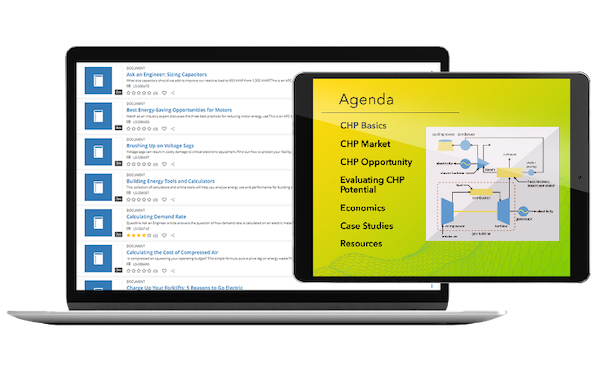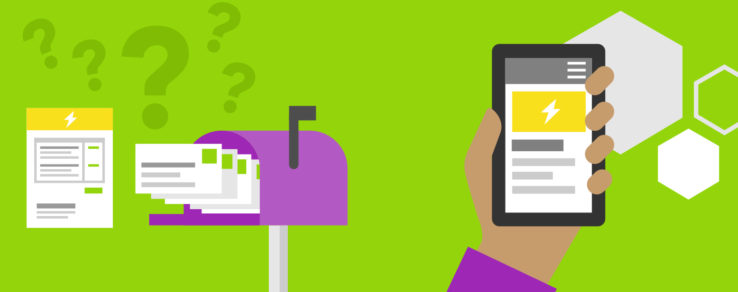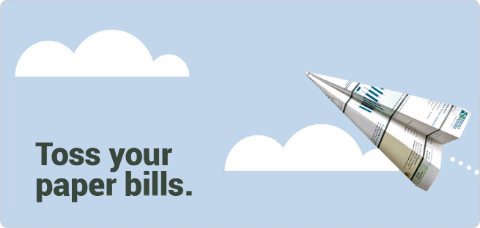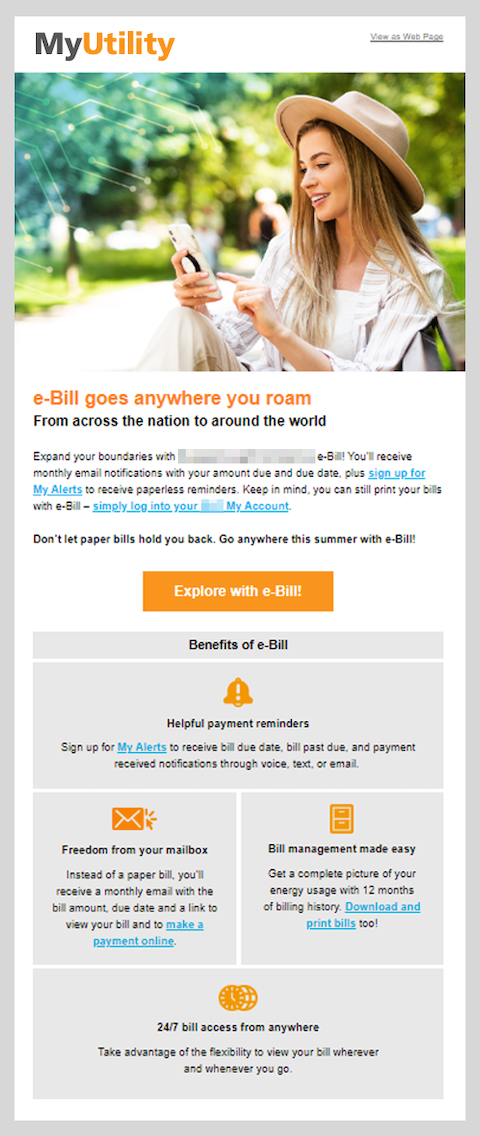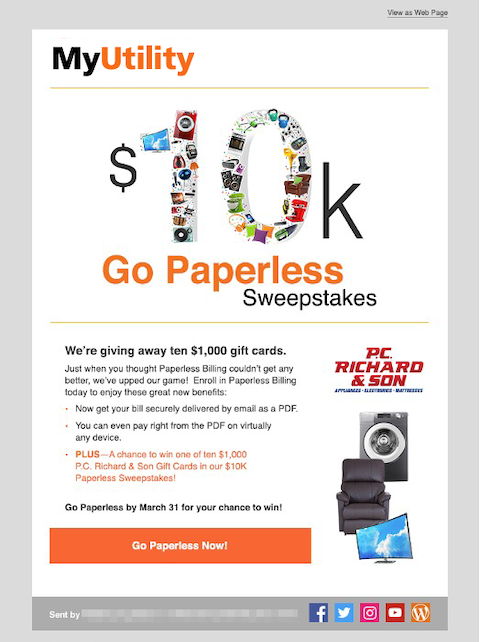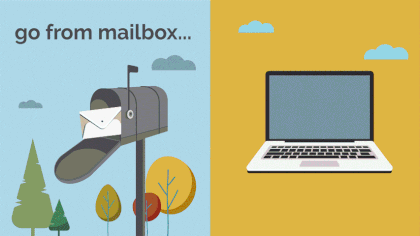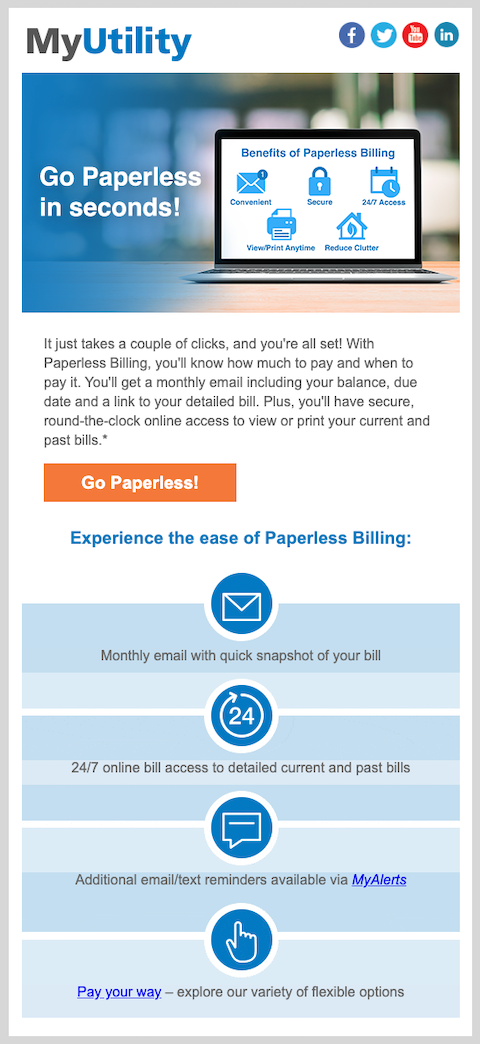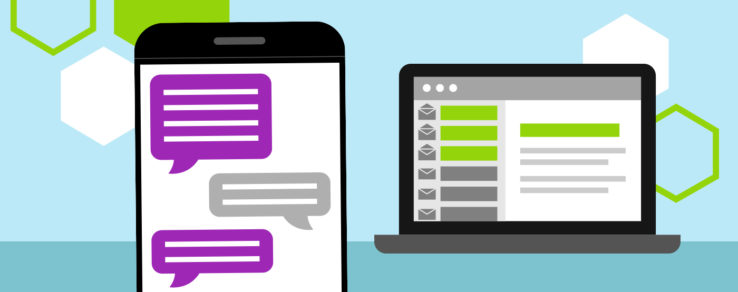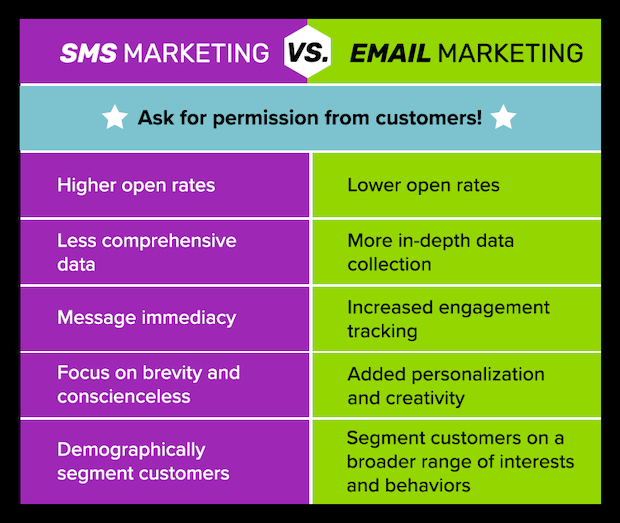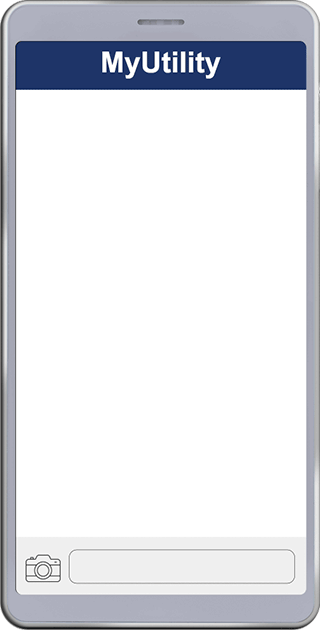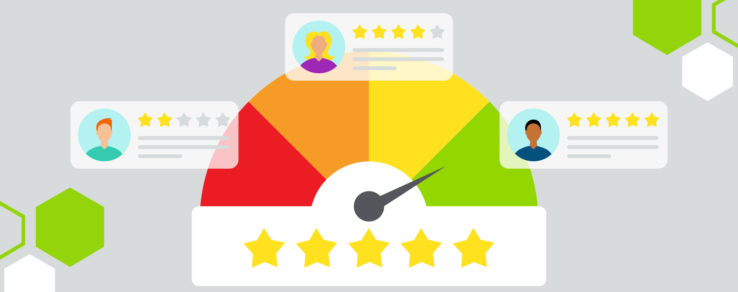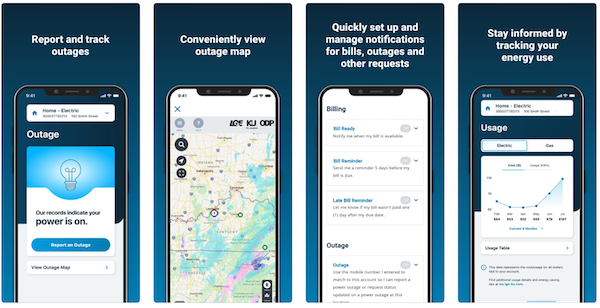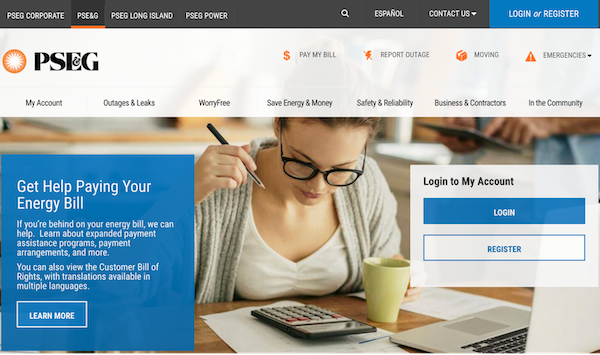With the proliferation of digital media and communication channels, capturing the attention of utility customers is more challenging than ever. As businesses compete for attention, one tool has risen above the rest in its ability to engage and captivate: personalized video. Recognized for their unique ability to connect with viewers on a deeper level, personalized videos are revolutionizing the way we communicate with customers.
Imagine opening an email from your favorite company. Instead of a generic message, there’s a video made just for you. It addresses you by name, discusses your unique needs, and offers tailored discounts or information for products that you’re interested in.
As futuristic as it may sound, the reality is that personalized video is available now, and many companies are already embracing this powerful marketing tactic.
“Personalized video combines the entertainment value of video marketing with the data-driven targeting of other digital tactics,” says Brian Lindamood, Questline Digital’s VP of Marketing and Content Strategy. “The ability of a video message to speak directly to each customer leverages all the best aspects of digital engagement in a uniquely powerful way.”
Personalized videos can lead to higher retention and conversion rates, as well as increased customer engagement. In fact, data shows that using personalized calls-to-actions (CTAs) result in 202% more conversions than those without. Building on the success seen in other industries, utilities can now harness this tool foster stronger relationships and drive customer satisfaction.
The Emergence of Personalized Videos
The rise of video marketing is hardly surprising given its unique ability to convey complex messages succinctly, evoke emotions and create a sense of connection. Data shows that 80% of customers are more likely to purchase from a brand that provides these tailored, emotional experiences. Today, video is not just an add-on to a digital marketing strategy, it’s an essential component that can significantly enhance your utility’s visibility and impact.
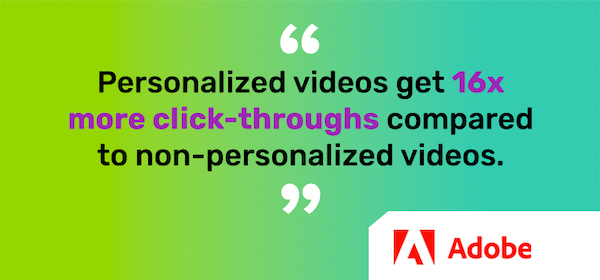
One facet of video marketing that’s gaining widespread popularity is personalization. By tailoring messages to each customer, businesses can make customers feel more valued and recognized. Personalized videos leverage customer data to create a unique viewing experience for each individual. This could be as simple as addressing the viewer by name or as complex as providing product recommendations based on their interests and engagement history.
For utilities, this could mean personalized program recommendations based on a customer’s energy use, explaining changes to a bill, introducing a new rate plan, updating customers on relevant energy efficiency programs, and more.
The result? A powerful marketing tool that stands out from the digital clutter and resonates on a personal level with customers.
Several leading brands have already harnessed the power of personalized video marketing to deliver exceptional results. For example, in Nike’s “Outdo You with Nike+” campaign, the company used personalized videos to connect with customers. Each video was tailored with information from a user’s location, activity and personal Nike+ movement data, providing a unique and highly personal viewing experience. This innovative approach not only helped Nike connect with their audience, it also motivated customers to achieve their fitness goals.
Spotify’s end-of-year Wrapped campaign is described as “all about celebrating the endless ways that millions of creators and fans connect through audio each and every day.” Through the “Made for You” recommendations and usage data, Spotify is able to provide personalized videos to each user at the end of the year that allows them to view summaries of their activity. Spotify includes the names of the listener’s top musicians and songs, genres and their listening personality, all delivered in a seamless personalized video.
Why Personalized Videos? Why Now?
The sudden surge in the popularity of personalized videos can be attributed to several factors. In today’s digital age, consumers increasingly expect personalized experiences that cater to their specific needs and preferences. In fact, 71% of consumers expect companies to deliver personalized interactions, and 76% get frustrated when this doesn’t happen.
Personalized videos meet this expectation by providing content that is tailored to each viewer’s individual circumstances and preferences. Moreover, personalized videos have proven to be highly engaging and effective at increasing customer retention and conversion rates. According to Adobe, personalized videos get 16 times more click-throughs compared to non-personalized videos.
Personalized videos can also help brands stand out in the crowded digital landscape, providing a unique and highly personal viewing experience that can capture the customer’s attention and leave a lasting impression. This not only increases the likelihood of the customer taking the desired action, but also strengthens their relationship with your utility.
“Personalized videos really help utilities connect with their audience on a deeper level and drive more effective engagement,” says Lindamood. “With relevant, targeted content like this, customers can see that their utility understands and respects their preferences, which is the foundation of a successful, long-term digital relationship.”
Additionally, with the rise of digital technologies and data analytics, creating personalized videos has become more accessible and cost-effective, further contributing to their use as a key marketing tactic in a wide variety of industries.
5 Benefits of Personalized Videos
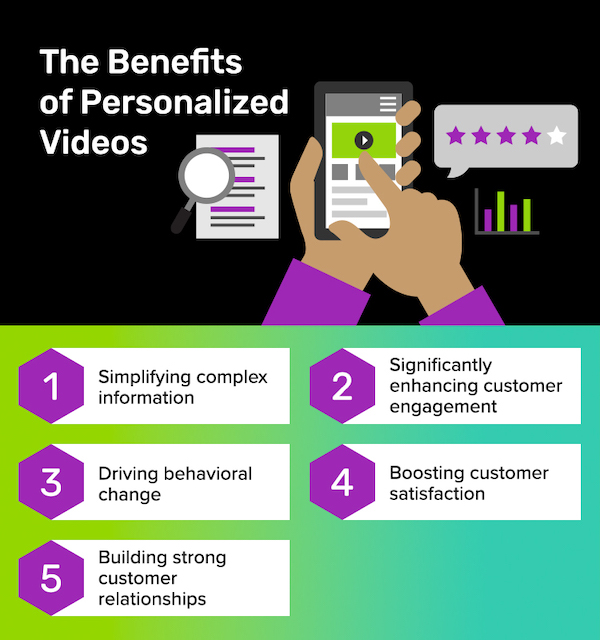
Personalized videos allow utilities to connect customers with relevant information based on their interests and information. This tool also has the ability to deliver complex information, such as energy usage or billing details, in a clear, concise and engaging manner. The goal is to enhance customer understanding and interest by creating content that speaks directly to them, addressing their specific needs and circumstances.
The benefits of personalized videos for utilities are substantial, including:
- Simplifying complex information
- Enhancing customer engagement
- Driving behavioral change
- Boosting customer satisfaction
- Building strong customer relationships
Simplifying complex information
Personalized videos are an effective tool for simplifying complex information. They leverage the power of visualization to break down intricate concepts or data sets into digestible, easy-to-understand content.
For example, your utility can use a personalized video to explain a customer’s energy usage pattern or billing details, using animated charts and customer-specific data. This not only makes the content more relatable but also helps customers better understand their consumption patterns or charges.
By presenting complex information in a clear and engaging manner, these videos can significantly improve customer comprehension, reduce confusion and enhance overall communication effectiveness. Additionally, by improving customer understanding, your utility will foster greater trust and transparency in the long run.
“Energy technology, programs and rate options are getting more complex,” says Lindamood. “It’s critical for utilities to use a communications tool that can effectively educate customers about these topics and help them take control of their energy use.”
Enhancing customer engagement
Let’s face it — customer attention spans are short and competition is fierce. By leveraging customer-specific data and presenting it in an engaging, visual format, personalized videos can cut through the clutter to deliver information in a way that resonates with each viewer.
This relevance and personal touch can lead to higher view rates, longer watch times and more meaningful interactions, all of which translate into increased customer engagement and program participation.
“When customers complain about receiving too many marketing messages, what they mean is they get too many message that they’re not interested in,” explains Lindamood. “Customers are willing to spend time with messages that they are interested in. A useful, relevant message isn’t considered to be clutter at all. That’s why personalization is so important for all digital marketing tactics, including video.”
Driving behavioral change
By presenting usage data in an engaging and accessible way, personalized videos can make customers more aware of their consumption patterns and the impact they have on both their bills and the environment.
For instance, a video showing a customer’s energy use over time, compared to more efficient usage scenarios, can be a powerful motivator for change. It can prompt customers to adopt more energy-efficient behaviors, such as turning off lights when not in use or optimizing heating and cooling systems. This not only helps customers save money but also contributes to broader sustainability goals. Personalized videos can also be used to recommend specific programs or products that a customer might be interested in based on their behavior and preferences.
Through personalized insights, recommendations and clear visualizations, personalized videos can inspire proactive change and foster more responsible consumption habits among utility customers.
Boosting customer satisfaction
One of the common challenges in the utility industry is making customers aware of programs or services that are relevant to them or could assist them, such as rebate programs. Personalized videos can address this challenge by presenting such information in a clear and personalized manner. This can improve customer understanding, reduce confusion, and ultimately lead to higher customer satisfaction.
Additionally, personalized videos focus on relevant recommendations, only promoting programs that a customer is eligible for and likely interested in — and not promoting programs that don’t apply to the customer.
By proactively addressing customer needs and concerns through personalized content, utilities can make their customers feel valued and well-served, further boosting satisfaction levels.
Building strong customer relationships
Personalization as part of any digital marketing strategy shows customers that their utility knows them, understands their needs and values their business. This can foster a sense of connection and trust with the customer. Moreover, by providing useful, personalized recommendations, such as energy-saving tips based on a customer’s specific usage patterns, utilities can position themselves as helpful, trusted energy advisors rather than just service providers. This can enhance customer loyalty and strengthen long-term relationships.
Best Practices for Creating Personalized Videos
Implementing a successful personalized video marketing strategy involves several best practices.
One of the most important aspects to consider is exactly how to make the content more relatable. To achieve this, it’s crucial to understand your audience’s needs and preferences, and use customer data to tailor the content to each viewer’s specific circumstances. This also means not only personalizing the content based on individual data, but also considering factors like the viewer’s stage in the customer journey, their specific needs and interests and current trends or events.
Storytelling can be a powerful tool for personalization. By weaving customer data into a compelling narrative, you can create a more immersive and emotionally engaging viewing experience. Remember, the goal is not just to present data, but to use that data to create a connection with your customers.
Keeping the content relevant and concise is another best practice for creating effective personalized videos. Customers’ time is important, which is why it’s essential to deliver your message quickly and clearly. Avoid including unnecessary details or complex jargon that could confuse viewers. Instead, focus on the most important information that your customers need to know and present it in a straightforward manner.
Additionally, an effective personalized video should always include strong calls-to-action (CTAs). The CTAs are what prompt your customer to take the desired action after watching the video, whether that’s signing up for a service or adopting more energy-efficient behaviors. Make sure your CTAs are compelling and easy for the viewer to carry out.
It can also be beneficial to personalize the CTA based on the viewer’s individual circumstances or the specific content of the video. For instance, if the video shows a customer’s high energy usage during peak hours, the CTA could drive customers to sign up for your utility’s time-of-use (TOU) rate plan and encourage them to shift some of their usage to off-peak times. This not only makes the CTA more relevant, but also helps drive more effective behavioral change.
You also need to consider the length of the video; if it’s too long, you might lose customers’ interest before they even arrive at your CTA. Typically, the shorter, the better. Consider the most concise point you’re trying to make and keep the story as succinct as possible.
It’s important to remember that personalized videos should only be one part of your marketing strategy. “Some topics and program promotions really lend themselves to personalized videos. But some may also benefit from follow-up email campaigns, SMS, or other digital outreach,” says Lindamood. “Personalized videos are an important tactic, but they should be part of an overall mix to reach different customers in their preferred channels.”
Harness the Potential of Personalized Videos
Personalized videos offer utilities a potent tool to develop a deeper connection with their customers. By delivering tailored, relevant, and engaging content, your utility can enhance customer loyalty, boost conversions and stand out in today’s crowded digital landscape.
As technology continues to evolve, personalized videos are set to shape the future of digital marketing, offering endless possibilities for utilities to connect with their audience like never before.
